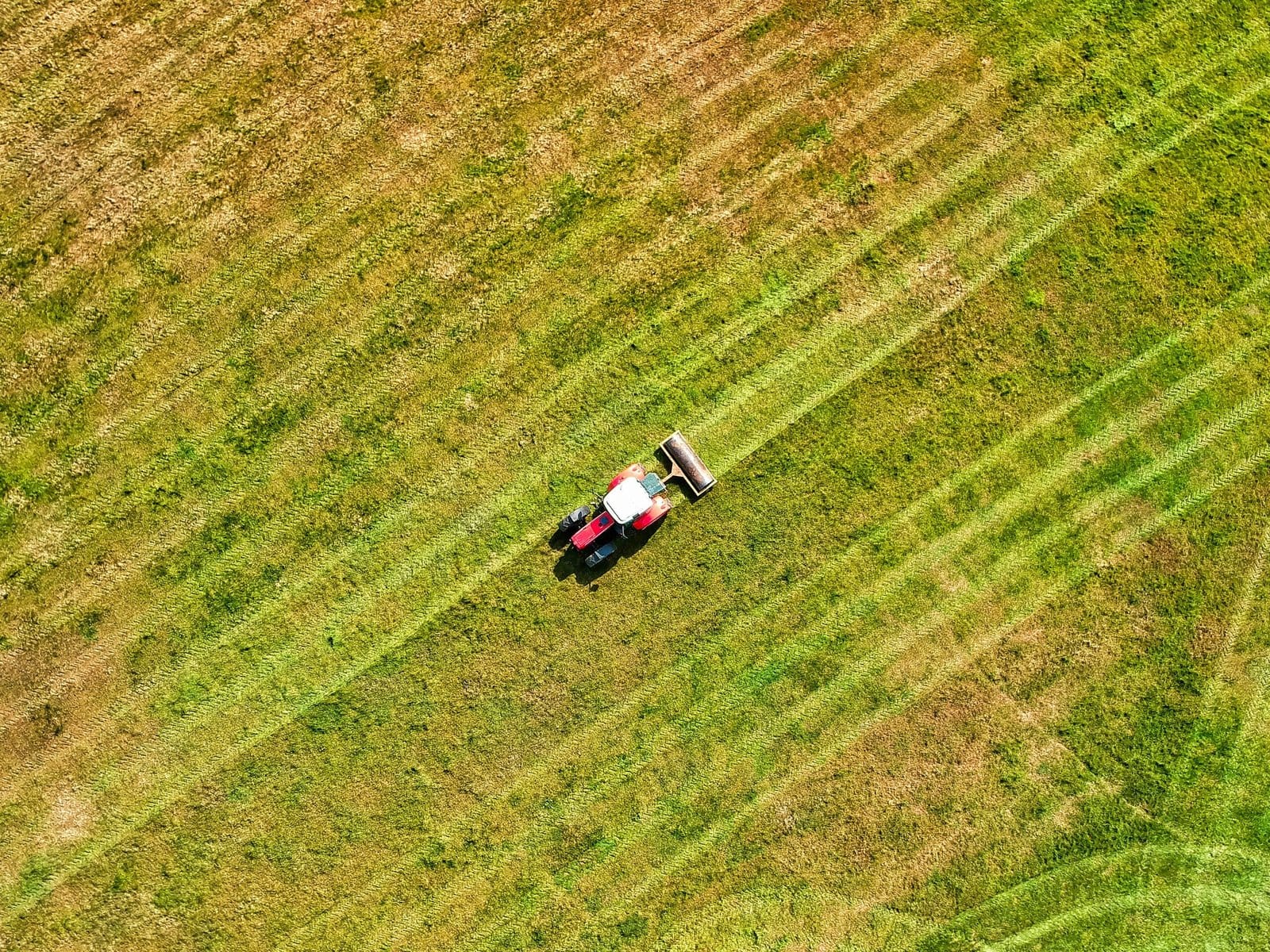Your cart is currently empty!

Introduction to Agricultural Machinery
Agricultural machinery refers to the various tools, machines, and equipment utilized in farming and agriculture to enhance productivity and efficiency. This machinery has become a cornerstone element in modern farming practices, enabling farmers to cultivate land, plant seeds, and harvest crops with greater precision and speed than ever before. In recent decades, advancements in agricultural technology have significantly transformed the industry, leading to increased yields and reduced labor demands.
The significance of agricultural machinery cannot be overstated. Traditionally, farming was a labor-intensive process that required significant physical effort and time, often relying on manual labor or animal power. However, the introduction of mechanized equipment has revolutionized this landscape. Modern agricultural machines, such as tractors, plows, and combines, empower farmers to accomplish tasks with efficiency and effectiveness, which in turn optimizes their cultivation practices.
One of the primary benefits of agricultural machinery is its ability to enhance efficiency. With machinery, farmers can cover large areas of land in a fraction of the time it would take using manual methods. For instance, modern seeding and planting machines can sow seeds uniformly and accurately, reducing waste and ensuring optimal growth conditions. This precision not only increases labor productivity but also minimizes the environmental impact often associated with traditional farming methods.
Moreover, agricultural machinery plays a vital role in improving crop yields. By employing advanced techniques such as precision agriculture, farmers can monitor soil health, manage resources effectively, and apply inputs like fertilizers and pesticides with greater accuracy. This data-driven approach, combined with the use of superior machinery, contributes to healthier crops and more abundant harvests, ultimately supporting the agricultural sector’s sustainability and profitability.
In summary, agricultural machinery is indispensable in modern farming, as it enhances efficiency, reduces labor costs, and leads to improved crop yields. Understanding and utilizing the right machinery is essential for new farmers seeking to thrive in today’s competitive agricultural landscape.
Tractors: The Backbone of Farming
Tractors serve as the cornerstone of agricultural operations, providing essential power and versatility to new farmers. They are indispensable for a variety of tasks, such as soil preparation, planting, and hauling heavy loads. The ability to perform such diverse functions makes tractors not only a vital component of a farming setup but also a significant investment for any agricultural enterprise. Understanding the different types of tractors available can empower new farmers to select the most suitable machinery for their specific needs.
There are several kinds of tractors, each designed for particular tasks on the farm. Utility tractors are commonly used for general-purpose farming tasks, such as plowing and harvesting. Compact tractors are smaller and ideal for agriculture on limited land, while row crop tractors offer excellent maneuverability for planting and maintaining crops in tighter spaces. Depending on the scale and type of farming operation, a farmer may choose to invest in one or more of these tractors to enhance productivity.
Recent advancements in tractor technology have further revolutionized the farming landscape. Precision farming features are among the most notable innovations, enabling farmers to optimize their fields using GPS and data analytics. These technologies can be instrumental in ensuring efficient usage of resources, improving crop yield, and reducing operational costs. Modern tractors now come equipped with automated systems that streamline processes like steering, depth control, and application rates, significantly enhancing efficiency.
In summary, tractors not only contribute significantly to modern farming practices, but they also embody the evolution of agricultural technology. By investing in the right type of tractor and leveraging advanced features, new farmers can build a robust foundation for productive farming operations.
Plows: Preparing the Soil
In agriculture, plowing is a fundamental practice that plays a crucial role in preparing the soil for planting. The use of plows helps in breaking up the top layer of soil, thereby enhancing aeration, water infiltration, and nutrient availability. This process is essential in promoting healthy crop growth and maximizing yields. Various types of plows are available, each designed for specific applications and soil conditions.
One of the most common types of plows is the moldboard plow. This plow turns over the soil, exposing the underlying layers to the surface while simultaneously burying crop residues. This action helps eradicate weeds and prepares a clean seedbed, which is vital for effective seed germination. Moldboard plows are particularly suitable for clayey soils where deep tillage is required to break up compacted layers and improve drainage.
On the other hand, chisel plows are designed to minimize soil disturbance. They consist of several sharp, narrow blades that penetrate the soil without completely inverting it, which helps preserve soil structure and moisture. This method aligns with sustainable agriculture practices by promoting soil health and reducing erosion. Chisel plows are especially beneficial in sandy or loamy soils and can be effectively used in conservation tillage systems.
Additionally, there are other variations of plows, such as disc plows and subsoilers, each offering unique benefits depending on the farming requirements. Disc plows are effective in tough, overgrown areas, while subsoilers are used to break up deeply compacted soil layers, promoting better root development for crops. By selecting the appropriate plow type and employing it effectively, farmers can optimize soil preparation processes, ultimately supporting sustainable agricultural practices that enhance productivity and soil health.
Seeders and Planters: Optimizing Planting Efficiency
In the realm of modern agriculture, seeders and planters play a pivotal role in enhancing planting efficiency and ensuring optimal seed placement. These essential pieces of agricultural machinery significantly contribute to the productivity of farms by reducing labor costs, improving seed distribution accuracy, and ultimately leading to better crop yields. The advancement in seeder and planter technology has made them invaluable tools for new farmers looking to establish a successful operation.
There are various types of seeders available, each designed to meet specific agricultural needs. Broadcast seeders are among the most common types, evenly distributing seeds over a large area of soil. This method is particularly effective for crops that require dense planting, such as grasses and cover crops. However, while broadcast seeders offer efficiency, they may not always ensure that seeds are placed at the appropriate depth or spacing, which can affect germination rates.
In contrast, precision planters have gained traction in precision agriculture due to their ability to deliver seeds at specific intervals and depths. This technology allows for tailored planting based on soil conditions and crop requirements, resulting in enhanced germination success and reduced seed waste. Precision planters utilize various mechanisms, such as vacuum systems or mechanical units, to ensure that every seed is optimally placed, fostering uniform crop development.
Furthermore, new innovations in seeder technology, such as variable rate seeding and automated settings, allow farmers to adapt quickly to changing soil conditions and fluctuating weather patterns. This flexibility not only optimizes planting efficiency but also enhances the overall sustainability of farming practices.
Overall, seeders and planters are crucial for new farmers aiming to optimize their planting processes, ensuring that seeds are sown with precision and care. Through understanding the capabilities and types of seeders available, farmers can make informed decisions to enhance their agricultural practices.
Cultivators: Maintaining Soil Health
Cultivators are essential agricultural machinery that contribute significantly to the health of soil, which is the foundation of sustainable farming practices. Their primary function is to control weeds, which compete with crops for vital nutrients and water. By uprooting or disrupting the growth of these unwanted plants, cultivators help to maximize the available resources for the crops, thereby promoting healthier yields.
In addition to weed control, cultivators also aerate the soil. This process improves soil structure and enhances water infiltration, creating an optimal environment for root development. Properly aerated soil allows for better engagement of microorganisms and improves the overall nutrient cycle, resulting in more fertile ground. Cultivators can also facilitate the mixing of organic matter and nutrients back into the soil, particularly when using cover crops or compost. This not only enriches the soil but also contributes to the build-up of organic matter, which is vital for maintaining long-term soil health.
When comparing modern cultivators to traditional methods, the advantages of contemporary equipment become evident. Modern cultivators are often designed with advanced technology and materials, making them more efficient and sustainable. Features such as adjustable depth control and precision tines allow for tailored soil management, minimizing disturbance to the root structure of crops while maximizing weed control. Furthermore, the durability of modern cultivators reduces the need for frequent repairs or replacements, making them a practical investment for new farmers.
Ultimately, the use of cultivators is integral to maintaining soil health. Through effective weed control, soil aeration, and nutrient mixing, cultivators play a pivotal role in promoting sustainable agriculture. By embracing modern cultivators, new farmers can enhance the efficiency and sustainability of their farming practices.
Harvesters: Streamlining the Harvesting Process
Harvesters are a critical component of modern agriculture, significantly enhancing the efficiency of crop collection. They are designed to harvest crops swiftly and effectively, reducing the labor required and allowing farmers to manage larger areas within a shorter time frame. There are various types of harvesters, each tailored for specific functions and crop types. The most notable among these are combine harvesters and forage harvesters.
Combine harvesters are multifunctional machines that perform several harvesting tasks simultaneously, including reaping, threshing, and winnowing. They handle a wide range of cereal crops such as wheat, barley, and oats. The advanced design of these machines allows for optimal seed recovery and minimal crop loss, making them vital for large-scale farmers aiming for high productivity levels. Additionally, many modern combines come equipped with GPS technology and yield sensors, further enhancing the efficiency of the harvest.
On the other hand, forage harvesters cater specifically to the collection of coarse crops like corn and grass, which are typically used for animal feed. They work by chopping the harvested material into smaller pieces, making it easier for transport and storage. The use of forage harvesters helps farmers maintain a more efficient workflow during the critical harvest season, ultimately contributing to increased livestock productivity.
Recent advancements in harvesting technology have introduced automation and robotics into the harvesting process. This evolution has enabled farmers to operate harvesters with greater precision and less manual intervention. Innovations such as autonomous harvesters and precision agriculture techniques help farmers optimize their resources. The integration of data analytics and machine learning further amplifies productivity by allowing for better decision-making and yield forecasting. As new technologies continue to emerge, harvesting operations will likely become even more streamlined and efficient, ensuring that new farmers can maximize their agricultural outputs.
Irrigation Systems: Ensuring Adequate Water Supply
Irrigation systems play a pivotal role in farming, serving as a critical infrastructure that ensures an adequate water supply for crops. With the increasing challenges posed by climate change and water scarcity, efficient irrigation practices are more vital than ever. Various methods are employed across the agricultural landscape, each with unique advantages in enhancing crop yields while contributing to sustainable farming.
One of the most efficient irrigation methods is drip irrigation. This technique delivers water directly to the roots of the plants through a network of tubing and emitters. By minimizing water evaporation and runoff, drip irrigation not only conserves water but also promotes healthier plants by providing a consistent moisture level. Additionally, this method reduces weed growth, as water is only applied where it is needed.
Another commonly used method is sprinkler irrigation, which mimics natural rainfall through a system of pumps, pipes, and sprinklers. This approach is particularly beneficial for large fields where uniform coverage is essential. Sprinkler systems can also be programmed for efficiency, ensuring that water is applied during optimal times to prevent loss from evaporation, especially in hot climates.
Surface irrigation, including furrow and flood methods, is often favored for its simplicity and low initial cost. While effective in certain conditions, surface irrigation can lead to water wastage if not properly managed. Therefore, proper planning and monitoring are crucial to maximize water use efficiency.
Modern irrigation systems are increasingly incorporating technology, such as soil moisture sensors and automated controls, which help farmers to optimize water application based on real-time data. By employing these advancements, farmers can significantly enhance water conservation efforts and contribute to sustainable agricultural practices. In conclusion, understanding the various irrigation systems available is essential for new farmers aiming to optimize their water resources and ensure resilient crop production.
Sprayers: Pest and Weed Management
Effective crop protection is fundamental to successful farming, and sprayers play an indispensable role in managing pests and weeds. There are several types of sprayers available to meet diverse agricultural needs, each with its unique features and applications. Understanding these options can empower new farmers to safeguard their crops while promoting sustainable practices.
Backpack sprayers are portable and user-friendly, making them ideal for small-scale applications, especially in areas where mobility is essential. They allow precise targeting of specific plants, which can help reduce pesticide use and minimize environmental impact. However, their capacity is limited, making them suitable for smaller operations or localized treatment.
Boom sprayers, on the other hand, are more suited for larger fields. These sprayers are mounted on tractors or other vehicles and are equipped with long arms that distribute the pesticide evenly over a broad area. Their efficiency makes them a popular choice for extensive crop management, although they require more careful calibration to prevent drift and ensure thorough coverage.
Airblast sprayers are particularly effective for orchards and vineyards. They use high-velocity air to propel the spray onto foliage, ensuring better penetration and coverage. While highly effective for specific crops, they demand careful handling to prevent over-application and protect non-target organisms.
Beyond selecting the proper sprayer type, new farmers should consider adopting integrated pest management (IPM) techniques. IPM combines biological, cultural, and chemical practices to manage pests sustainably. This holistic approach not only reduces dependence on chemical pesticides but also enhances crop health and yields.
In conclusion, sprayers are vital tools for modern agriculture, offering various options to navigate the challenges of pest and weed management. By understanding the different types of sprayers available and incorporating sustainable practices, farmers can protect their crops effectively and support environmental health.
Quality Control and Diagnostic Tools: Ensuring Optimal Growth
In the agricultural sector, quality control and diagnostic tools play a crucial role in achieving optimal crop growth and productivity. These technologies enable farmers to make informed decisions based on accurate data, ultimately leading to improved crop health and yield. Various tools are available that cater to different aspects of farming, including soil testing kits, moisture sensors, and yield monitors.
Soil testing kits are among the most essential diagnostic tools for farmers. They provide critical information about soil pH, nutrient levels, and organic matter content. Understanding these parameters allows farmers to develop effective fertilization and soil amendment strategies tailored to specific crop needs. By regularly testing soil, farmers can mitigate potential problems before they escalate, thereby ensuring that their crops receive the nutrients required for optimal growth.
Moisture sensors contribute significantly to effective irrigation management. These sensors enable farmers to monitor soil moisture levels in real time, preventing overwatering and underwatering. By maintaining proper moisture levels, farmers can enhance water efficiency, reduce irrigation costs, and strengthen plant health. Moisture sensors also aid in determining the best times for planting and harvesting, aligning crop cycles with environmental conditions.
Yield monitors are sophisticated devices that evaluate crop output during harvest. These tools record data regarding the quantity and quality of the yield, offering insights into crop performance across different fields. Analyzing this data assists farmers in identifying high-performing areas as well as those in need of improvement. This information can be invaluable for planning future crop rotations and selecting crop varieties suited to specific growing conditions.
Investing in quality control and diagnostic tools enables new farmers to streamline operations, reduce costs, and optimize growth. By leveraging these technologies, farmers can foster healthier crops and ensure long-term sustainability in their agricultural practices.
Conclusion: Embracing Technology for Sustainable Farming
The landscape of modern agriculture has significantly transformed due to the integration of advanced agricultural machinery. As new farmers navigate the complexities of crop production and livestock management, understanding the importance of these tools is crucial for successful operation. The machinery discussed in this blog post plays a pivotal role in enhancing efficiency and productivity, allowing farmers to maximize their output while minimizing the physical demands of labor-intensive practices.
Moreover, the adoption of modern agricultural equipment aligns with sustainable farming principles. Through precision farming techniques enabled by this technology, farmers can optimize resource utilization, thereby reducing waste and conserving essential resources such as water and soil. For instance, using precision planters can ensure accurate seed placement, leading to optimal growth conditions and reduced excess input. Similarly, advanced irrigation systems can help tailor water application to the needs of specific crops, promoting healthier produce and reducing water wastage.
As the agricultural sector continues to face challenges such as climate change and growing global populations, the significance of embracing technology cannot be overstated. Agricultural machinery not only aids in meeting the immediate demands for food production but also contributes to long-term sustainability goals. By equipping themselves with the right machinery, new farmers can build resilient farming practices that support both environmental stewardship and economic viability.
Ultimately, understanding and utilizing agricultural machinery is not merely a choice but a necessity for new farmers aspiring to thrive in today’s dynamic agricultural landscape. Investing in these tools will lead to a future where farming is not only productive but also sustainable, paving the way for successive generations to benefit from the land. As we move forward, the synergy between technology and sustainable farming will be instrumental in shaping the future of agriculture.


